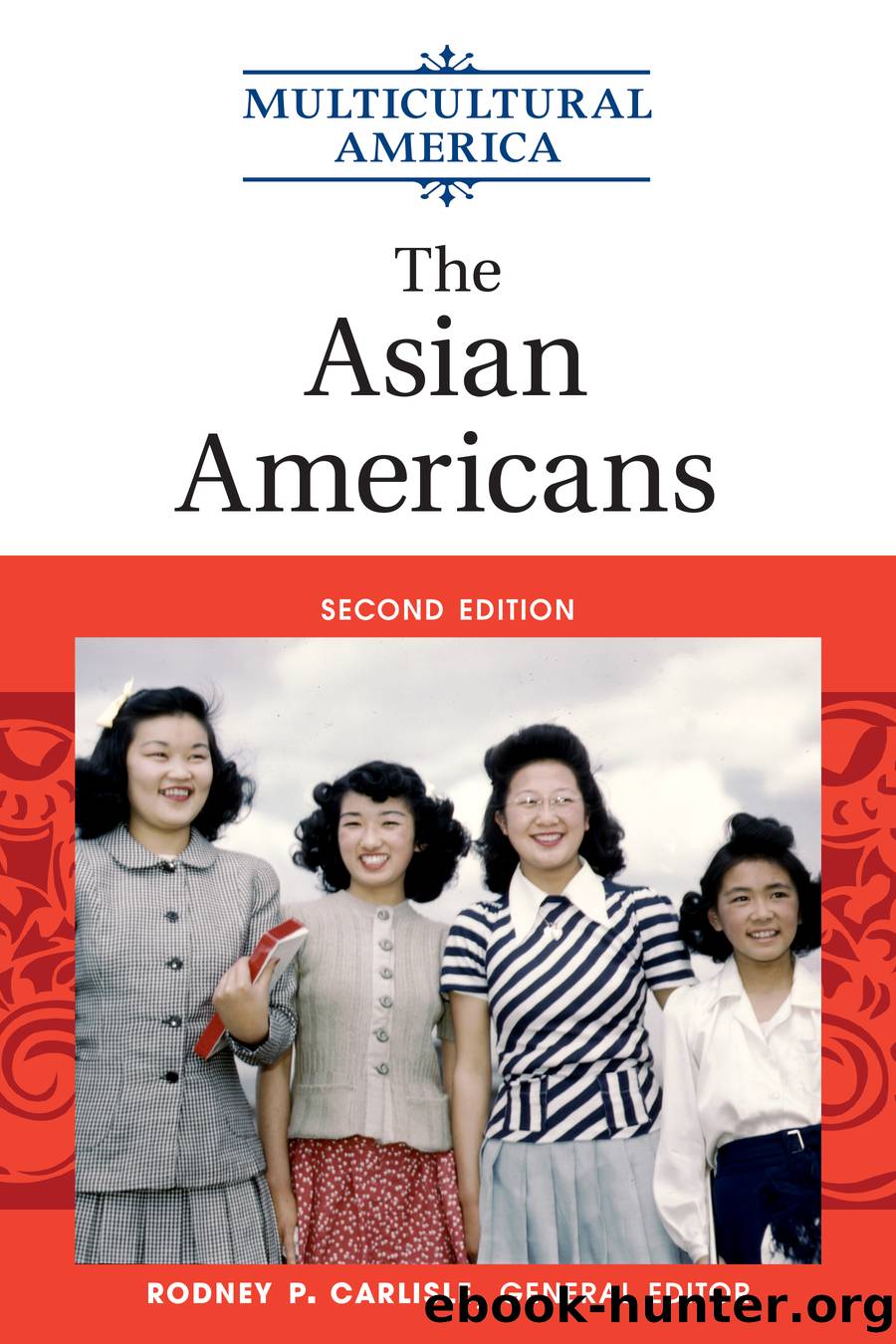The Asian Americans by Rodney P. Carlisle

Author:Rodney P. Carlisle
Language: eng
Format: epub
Tags: CHBiographies
ISBN: 9781438170312
Publisher: Infobase Publishing
Published: 2017-04-13T21:07:14+00:00
Postwar Immigration: 1950 to 1959
The 1950s were a time of prosperity in the United States, a time of increasing incomes that enabled average blue-collar families to participate in the growing consumerism. Work-saving household appliances proliferated, movies played to record audiences, and the new medium of television began to bring entertainment and news into individual homes across the nation. But the economic prosperity masked growing fears of international communism. By 1950 the cold war cast a threatening shadow over American society. The fall of China to Mao Zedong's communist forces in 1949, followed quickly by the beginning of the Korean War in June 1950, increased tensions not only internationally, but also domestically, leading to the rise of McCarthyismâSenator Joseph McCarthy's investigations of communist infiltration into government and society. This Red Scare led to passage of the Internal Security Act, and other legislation designed to control organizations and individuals suspected of being subversive. This atmosphere of distrust had a direct impact on many Asians, both in the United States, and for those seeking entry.
In 1950 the U.S. Census reported the largest Asian group to be Japanese (326,379), followed by Chinese (150,005), and Filipino (122,707). Totaling 599,091 people, the three groups accounted for only 0.4 percent of the total U.S. population. Other smaller groups raised the total to only about one-half of one percent of the population. During the decade, immigration and natural growth raised these counts to 464,468 people of Japanese ancestry, 237,292 Chinese, and 176,310 Filipino. These represented increases of 42.3, 58.2, and 43.7 percent, respectively. Prior to World War II, there had been no real Korean community in the United States, except perhaps in Hawaii. During the 1950s, approximately 8,000 Korean refugees, orphans, and war brides entered the country. By the end of the decade, the Asian population comprised 52 percent Japanese, 27 percent Chinese, 20 percent Filipino, and one percent Korean, with a negligible amount of others from southeast Asia. The majority of each population was female and resided in areas bordering the Pacific Ocean, with the largest Asian communities found in Honolulu, San Francisco, New York, Los Angeles, Oakland, Chicago, Sacramento, Boston, Washington, D.C., and Stockton (California).
Download
This site does not store any files on its server. We only index and link to content provided by other sites. Please contact the content providers to delete copyright contents if any and email us, we'll remove relevant links or contents immediately.
Trapped in a Video Game: The Complete Series by Dustin Brady(143)
Man of the Hour--3 Book Box Set by Diana Palmer(115)
The Gareth & Gwen Medieval Mysteries Boxed Set by Sarah Woodbury(110)
Stella and Sol by Kimberly Loth(108)
Wildfire (Street Rats of Aramoor: Book 5): A Coming of Age Fantasy Adventure by Michael Wisehart(106)
Dark Love by Skye Warren(96)
The Jewish Americans by Rodney P. Carlisle(91)
Bernard Evslin's Greek Mythology by Bernard Evslin(91)
HERO Force Box Set by Amy Gamet(88)
Temple Secrets Series by Susan Gabriel(79)
The McMurrays of Mason Creek: A Steamy Small-town Boxed Set by Molly McLain(78)
Superpower Kids by El Ninjo & Timmie Gu(76)
Sir Dudley Tinklebutton and the Dragon's Lair by T.J. Lantz(73)
Further tales of the unexpected by Dahl Roald(72)
Comic Ebook by El Ninjo(67)
The Power of Three by Xaviera Snow(64)
The Asian Americans by Rodney P. Carlisle(63)
The Dawn of the Witch 2 by unknow(62)
10 Great Makerspace Projects Using Social Studies by Kerry Hinton(48)
